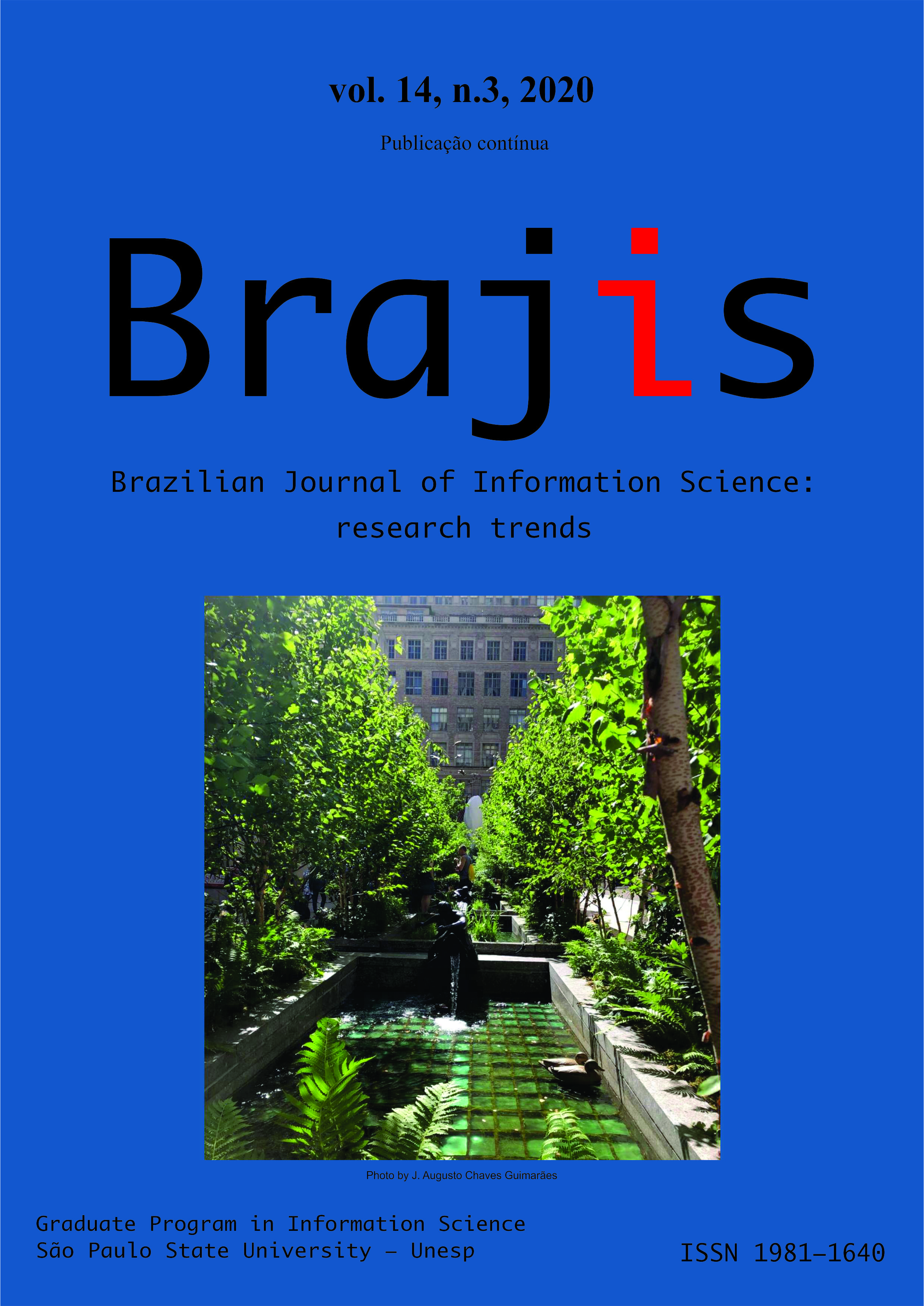Exploratory Analysis of Twitter data
Understanding the health information connections during the Yellow Fever Outbreak in 2017
DOI:
https://doi.org/10.36311/1940-1640.2020.v14n3.10179Keywords:
Social Network, Data Mining, Yellow Fever, Exploratory Graph AnalysisAbstract
This paper presents a detailed analysis of how health information was shared and discussed on Twitter in terms of awareness and opinions during the 2017 Yellow Fever outbreak in Brazil. For this, the data mining approach with exploratory graph analysis was performed. As main results, Twitter activity peaks were identified compared to peaks of cases reported in some regions of the country, an analysis of hashtags linked to the main subject and different topics from the exploratory analysis of graphs such as vaccination campaign, feelings, prevention, rumors, other diseases linked to the same transmitter, among others. This study illustrates that social networks, such as Twitter, offer unique opportunities for participatory surveillance, which can assist in monitoring some aspects of public health and offer additional data to health managers on how people interact during an outbreak.
Downloads
References
Araújo, Gabriela Denise., et al. “Sentiment Analysis of Twitter’s Health Messages in Brazilian Portuguese”. J. Health Inform, vol. 10, no. 1, p. 17-24, 2018.
Appel, Ana Paula. Métodos para o pré-processamento e mineração de grandes volumes de dados multidimensionais e redes complexas. 2010. Universidade de São Paulo, Instituto de Ciências Matemáticas e de Computação, Tese de doutorado.
Bardin, Laurence. Análise de conteúdo. São Paulo: Edições 70, 2016.
Beykikhoshk, A., et al. “Using Twitter to Learn about the Autism Community”. Soc. Netw. Anal. Min., vol. 5, no. 22, 2015. https://doi.org/10.1007/s13278-015-0261-5
Boldrini, Angela. “Surto de febre amarela no Brasil é o maior de série histórica, desde 1980”. Folha de S. Paulo, São Paulo, 26 jan. 2017.
Brasil, Ministério da Saúde, Secretaria de Vigilância em Saúde. Informe especial febre amarela no Brasil nº 01/2017, Saúde, 2017a, portalarquivos.saude.gov.br/images/pdf/2017/marco/18/Informe-especial-COES-FA.pdf
Brasil, Ministério da Saúde, Secretaria de Vigilância em Saúde, Centro de Operações de Emergências em Saúde Pública sobre Febre Amarela. Informe nº43/2017b, 2017b, portalarquivos.saude.gov.br/images/pdf/2017/junho/02/COES-FEBRE-AMARELA---INFORME-43---Atualiza----o-em-31maio2017.pdf
Brasil, Ministério da Saúde, Secretaria de Vigilância em Saúde, Departamento de Vigilância de Doenças Transmissíveis. Febre amarela silvestre no Brasil, 2017c, www.saude.gov.br/images/pdf/2017/junho/22/1.%20b%20-%20FA_CIT_22.06.2017.pdf
Dorow, Beate. A Graph Model for Words and their Meanings, 2006. Universität Stuttgart, PhD Dissertation.
Grover, Purva, et al. “Technology enabled Health” – Insights from twitter analytics with a socio-technical perspective. International Journal of Information Management, vol. 43, p. 85–97, 2018.
Guimarães, Raphael Mendonça, et al. “Os desafios para a formulação, implantação e implementação da Política Nacional de Vigilância em Saúde”. Ciênc. saúde coletiva, Rio de Janeiro, vol. 22, no. 5, p. 1407-1416, 2017.
Hoffman, L. Beth., et al. “It’s not all about autism: The emerging landscape of anti-vaccination sentiment on Facebook”. Vaccine, vol. 37, p. 2216-2223, 2019.
Klein, Gisiela Hasse, Guidi Neto, Pedro and Tezza, Rafael. “Big Data e mídias sociais: monitoramento das redes como ferramenta de gestão”. Saúde soc., vol.26, no.1, p.208-217, Mar 2017, ISSN 0104-1290. http://dx.doi.org/10.1590/s0104-12902017164943.
Lakatos, Eva Maria. Fundamentos de metodologia científica. 8th ed. São Paulo: Grupo Gen - Atlas, 2017.
Miller, Wendy R., et al. “Word Adjacency Graph Modeling: Separating Signal From Noise in Big Data.” Western Journal of Nursing Research, vol. 39, no. 1, pp. 166–185, Jan. 2017, https://doi.org/10.1177/0193945916670363
Sanders-Jackson, A., et al. “Applying linguistic methods to understanding smoking-related conversations on Twitter”. Tobacco Control, vol. 24, p. 136-138, 2015.
Stefanidis, A. et al. “Zika in Twitter: Temporal Variations of Locations, Actors, and Concepts”. JMIR Public Health Surveill, vol. 3, no. 2, 2017.
Tangherlini, R. T. et al. “Mommy Blogs” and the Vaccination Exemption Narrative: Results From A Machine-Learning Approach for Story Aggregation on Parenting Social Media Sites. JMIR Public Health Surveill, vol. 2, no. 2, p. 166, 2016.
Downloads
Published
Issue
Section
License
When submitting an article, the authors retain the copyright of the article, giving full rights to the Brazilian Journal of Information Science to publish the text.
The author(s) agree that the article, if editorially accepted for publication, shall be licensed under the Creative Commons Attribution-ShareAlike 4.0 International (CC BY-SA 4.0) license (http://creativecommons.org/licenses/by-sa/4.0) Readers/users are free to: - Share — copy and redistribute the material in any medium or format - Adapt — remix, transform, and build upon the material for any purpose, even commercially. The licensor cannot revoke these freedoms as long as you follow the license terms. Under the following terms: - Attribution — You must give appropriate credit, provide a link to the license, and indicate if changes were made. You may do so in any reasonable manner, but not in any way that suggests the licensor endorses you or your use. - ShareAlike — If you remix, transform, or build upon the material, you must distribute your contributions under the same license as the original. No additional restrictions — You may not apply legal terms or technological measures that legally restrict others from doing anything the license permits. Notices: - You do not have to comply with the license for elements of the material in the public domain or where your use is permitted by an applicable exception or limitation. - No warranties are given. The license may not give you all of the permissions necessary for your intended use. For example, other rights such as publicity, privacy, or moral rights may limit how you use the material.
 Creative Commons Attribution-ShareAlike 4.0 International License.
Creative Commons Attribution-ShareAlike 4.0 International License.







